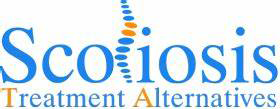Your child has recently been diagnosed with scoliosis. Now what? Often times Orthopedists don’t take the time to sufficiently explain potential risks, complications of scoliosis or the benefits of all types of treatment. So you may you find yourself trying to learn as much as you can about the condition on the internet in order to make intelligent choices.
A recent article in US News & World Report entitled “My Child Has Scoliosis. Now What?” advises not to panic but instead get informed.
Here are the 3 most common recommendations made by conventional medicine to treat your child’s scoliosis.
Since most parents find these options too limited I’ve also included information on alternative treatments that you may wish to consider for your child’s scoliosis:
- Watch & WaitIn the early stages the curvature is often considered a Mild Scoliosis (10° – 24°) doctors will simply choose to provide no treatment at all to your child. In many cases, mild scoliosis may not worsen so doctors often advise doing nothing to treat your child’s scoliosis and instead take a wait and see attitude. While that might be good advice if your child’s curve doesn’t progress in that time frame between X-ray evaluations, there are risks to that strategy that you should consider. First is if your child is in the midst of a growth spurt that is when they are at the greatest risk for progression of their scoliosis. The larger the curve gets the more challenging it becomes to correct, so waiting to start treatment can make it more difficult to improve later down the line.
Alternative Treatments in Early Stages – The Schroth Method of Scoliosis Specific Exercise
- Hard Bracing– The “Standard of Care” in Moderate Scoliosis (25° – 39°) treatment remains hard bracing but many question the efficacy of it because it tends to immobilize the spine, much like a body-cast. Immobilization of the spine can cause muscle atrophy in much the same way a cast on your arm causes the muscles to weaken. While you can get some reduction in scoliosis while your child is being held in the brace, once the brace is removed the spine often goes right back to the starting curvature or gets even worse since the muscles have been weakened. Also, hard braces are only designed to stop the progression of scoliosis and not improve it.
Alternatives to Hard Bracing – SpineCor Dynamic Tension Orthosis
- Scoliosis Surgery – Scoliosis surgery is usually not considered until a curve is considered as a Severe Scoliosis (40° or greater) While in most cases scoliosis surgery should only be considered as a last resort, in the US there appears to be an increase in the number of scoliosis cases going to surgery. The primary reason for this phenomenon appears to be due to the stopping of standardized scoliosis screenings in elementary and middle schools. Since children are no longer being routinely evaluated for scoliosis in school, their curves often go unnoticed until they are much larger and more difficult to correct.
Alternatives To Scoliosis Surgery – Combination Therapy Research has shown that Combination Therapy that includes the use of scoliosis specific exercise, like the Schroth Method combined with the use of a dynamic orthosis, like SpineCor, has the greatest success rate in stopping progression of curves.
When a scoliosis is still mild it is also when it is most correctable so interventions like scoliosis specific exercise that can help reverse the postural distortions of scoliosis can be quite beneficial at not only stopping progression of scoliosis but it can also help reduce the curves.
Because the elastic bands components of the orthosis allow the body to move while it is worn the problem of muscle atrophy is eliminated.


From a woman who had sever scoliosis as a child and needed surgery..39 years ago..and had 2 daugthers..that i watched carefully thtough the years..i started them with Chiropractic treatments from the age of 5 till now 20 years old 1 or 2 a month..thank god seemed to help..it to never occur in either of them…because it is hereditary…the muscles need to get strong..and during growth spurts..adjustments keep them growing straight…
Denise,
Thanks for the input. It’s true, the most dangerous time for a scoliosis to rapidly progress is when a child reaches puberty. Research shows that risk factors such as early development of scoliosis (prior to the onset of puberty) and the greater the degree of the curve the more likely the scoliosis is to progress. That’s why it’s so often very important to start interventions early in cases where there is a family history of scoliosis or the onset of the curve is prior to the onset of puberty.
Do whatever you can for your young daughters NOW! I am a 67 year old woman suffering the consequences of having nothing done at a young age.
I had infantile scoliosis with a curvature of 86 degrees. Even after braces age 2 to 10 and 14 surgeries from 10-14 it only reduced the degree to 83 I had enough pain. Told the doctors who had minimal 3 more sergeries planed that God made me how he wanted and I was done! I don’t care if I was not normal. Whos to judge
The pain isn’t worth fitting In to societies “norm”.
I can certainly understand your position.